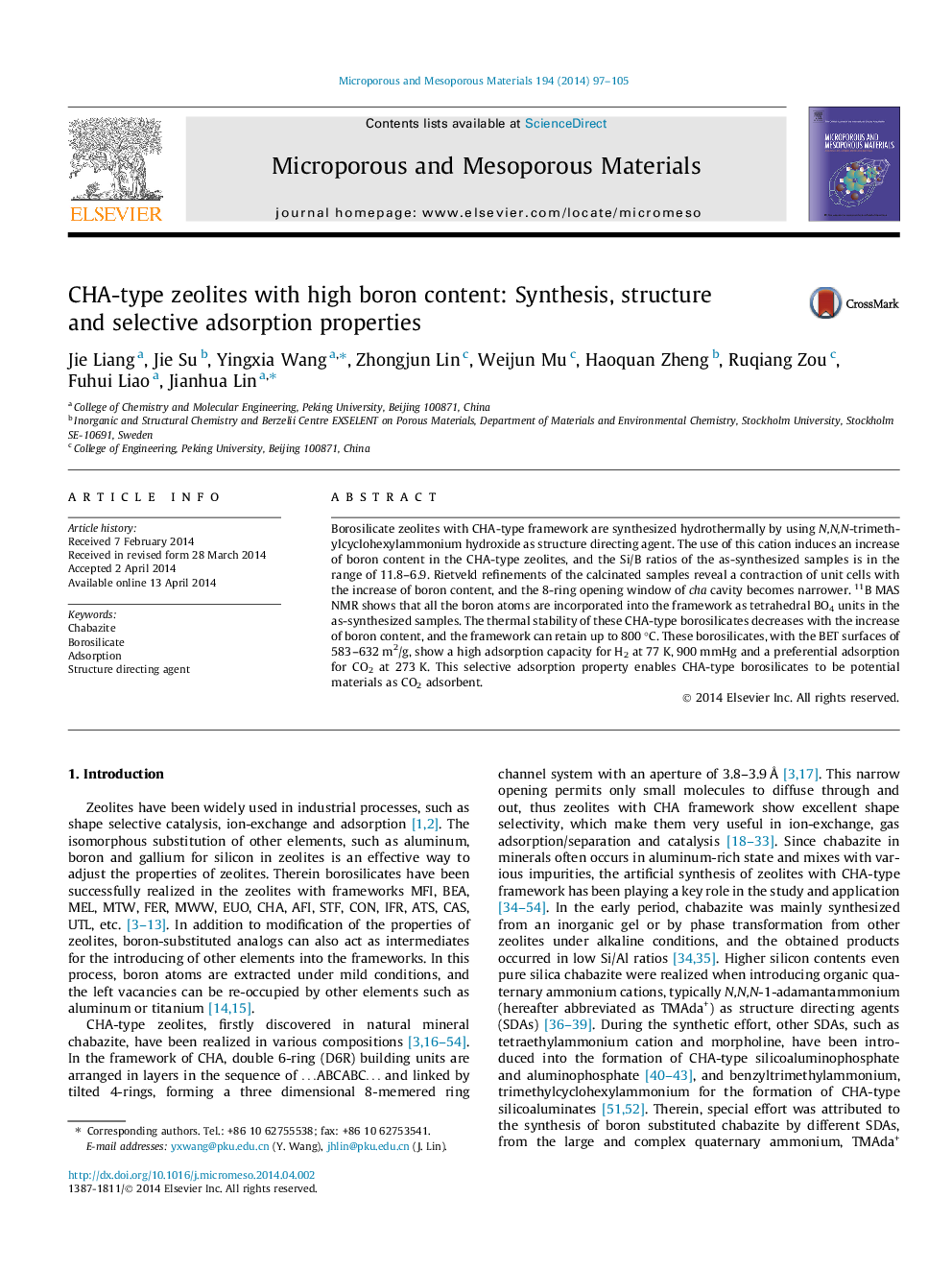| Article ID | Journal | Published Year | Pages | File Type |
|---|---|---|---|---|
| 73072 | Microporous and Mesoporous Materials | 2014 | 9 Pages |
•Trimethylcyclohexylammonium cation is used to synthesize CHA-type borosilicates.•Boron content in the zeolites is highly increased.•Unit cell parameters shrink and the 8-ring window of cha cavity becomes narrower.•CHA-type borosilicates selectively absorb CO2, but repulse CH4 at 273 K.
Borosilicate zeolites with CHA-type framework are synthesized hydrothermally by using N,N,N-trimethylcyclohexylammonium hydroxide as structure directing agent. The use of this cation induces an increase of boron content in the CHA-type zeolites, and the Si/B ratios of the as-synthesized samples is in the range of 11.8–6.9. Rietveld refinements of the calcinated samples reveal a contraction of unit cells with the increase of boron content, and the 8-ring opening window of cha cavity becomes narrower. 11B MAS NMR shows that all the boron atoms are incorporated into the framework as tetrahedral BO4 units in the as-synthesized samples. The thermal stability of these CHA-type borosilicates decreases with the increase of boron content, and the framework can retain up to 800 °C. These borosilicates, with the BET surfaces of 583–632 m2/g, show a high adsorption capacity for H2 at 77 K, 900 mmHg and a preferential adsorption for CO2 at 273 K. This selective adsorption property enables CHA-type borosilicates to be potential materials as CO2 adsorbent.
Graphical abstractFigure optionsDownload full-size imageDownload as PowerPoint slide
